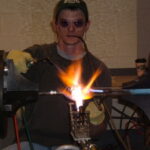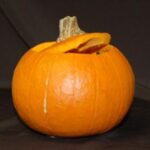Painting embellishments of flowers or scenery can be done with just a few tricks. You don’t need to be an artist or a designer to create these interesting pieces, either. So, if you are ready to become an artist, here are a few tips on painting glassware.
Pre-drawing
Make a few sketches of what you want to be on your finished glass or plate. Don’t make it too intricate until you have done a few and get the general feel for it. Try some simple drawings on sketch paper of flowers or leaves. If you have trouble drawing free-hand than use magazine photos of the real thing to figure out the forms. Don’t be afraid to trace the general outlines of photographed flowers; you won’t run into copyright laws unless you plan on selling your work.
When you have a design, simply insert the paper into the glass or behind the plate so that your design will see-through to the surface you are painting on (obviously a solid glass plate will not work in this case so start with wine glasses or clear candy dishes). You must first do the necessary prep work to make your glass useable for painting on (usually by using a surface conditioner). With enamel paint specifically for use on glass, use the backing as a guide to paint your images. Try to keep your brush strokes going the same direction for each shape you do. For example, if you are doing outlines of hearts you should do an upstroke for one side of the heart and a down stroke to form the other side of the heart; doing it the same way for each heart will keep it professional looking and consistent. Don’t worry about messing up, because you can always remove it with a damp cloth while it is still wet.
Balance
Because you are working in 3D on a wine glass, you will need to have a design that looks consistent all the way around. Try a balance of a whispy vine design on opposite sides. If you want something more encompassing, than make small flowers in a zig-zag pattern all the way around the glass. Practice on dollar store glasses and be sure to keep a damp cloth handy so you can wipe off mistakes and start over again.
On a glass plate, you will find that the surface is much easier to work on. These plates are not intended for actual use, so you can make designs in the center if you wish. You can balance images by making border designs that correspond with your center picture. Let’s say you create a log cabin the middle of the plate; when coordinating the edges, you can use a circular design of leaves to keep with the center woodsy theme. A solid plate will be harder to work with than a clear one that you can place a design sheet under, so be aware of your limitations until you become more advanced.
Color
Choosing your colors can be obvious for some, but if you aren’t used to placing colors together in a picture, it can be intimidating. Using a sketch sheet, paint a trial of the color choice you want for your images with the paint you will be using. Although the paper will make the colors a little different than on the glass, you can see if the colors complement or look too dull together. You can also practice by painting on a ‘trial’ piece of dollar store glassware so you can truly see how they work together on the glass when they are dry. For additional reference, you can pick up a color wheel diagram or spin chart at a painting supplies store that will help you see which colors go together in the spectrum.






